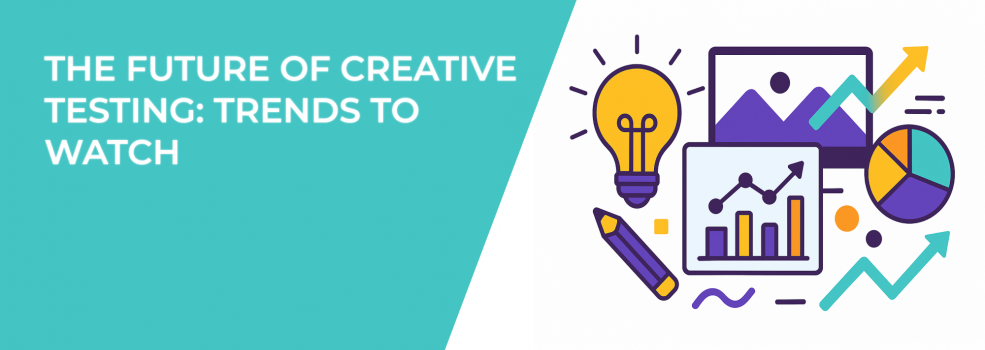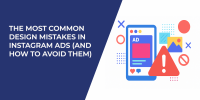Creative testing has always been a cornerstone of successful digital advertising. In the coming years, it won’t just be about swapping out ad images or tweaking copy. It will be about making smarter, faster, and more data-driven decisions that keep pace with the evolving behavior of your audience. The pace of change in platforms, algorithms, and user expectations is accelerating — and marketers who adapt their creative testing strategies will have a serious competitive edge.
So, what does the future look like? And how can advertisers prepare for it now rather than playing catch-up later?
1. Real-Time Creative Optimization
In the past, creative tests often ran for days or even weeks before clear winners emerged. Soon, advances in AI-powered analytics will allow real-time adjustments. Imagine launching a campaign in the morning, then shifting budget toward top-performing creatives by lunchtime.
The benefits are obvious — less wasted spend, faster learnings, and more confident scaling. But it also means marketers need processes and tools ready to act instantly. If you’re still manually checking reports twice a week, you’ll be left behind.
Example: A retail brand launches four product carousel ads on Facebook. By the third hour, click-through rates show one creative is driving twice the engagement of the others. An automated rule shifts 70% of the daily budget to that winning creative, maximizing results before the competition catches on.
Tips for real-time testing:
-
Set automated alerts for key performance thresholds (e.g., CTR above 3%, cost per lead under $5).
-
Test fewer variables per creative so you can isolate what’s driving results.
-
Keep backup creatives ready to rotate in if performance drops suddenly.
Real-time optimization is like catching a wave at its peak — the sooner you act, the bigger the momentum you can ride.
If you’re ready to move beyond manual checks, our guide on how to use automated rules to improve Facebook campaign efficiency explains exactly how to set them up for faster decision-making.
2. Micro-Segmentation Testing
Broad audience tests are giving way to micro-segmentation. Instead of testing one creative across a general audience, advertisers will create multiple variations tailored to smaller, highly specific groups.
Think of it like this: instead of one “hero” video ad, you have five — each speaking to a slightly different motivation or demographic. The more relevant your creative feels, the higher your engagement and conversion rates will climb.
Use case: A fitness app runs two ad sets: one targeting busy professionals with quick 15-minute workouts, another for parents featuring family-friendly exercises. Same product, different pain points, different creatives. The ads resonate more deeply because they feel personal.
Tips for micro-segmentation:
-
Build audience segments based on purchase intent, interests, and behaviors — not just age or gender.
-
Customize visuals and copy to reflect the unique challenges or desires of each group.
-
Track not only CTR but also downstream metrics like retention or repeat purchases to see long-term impact.
The smaller the segment, the sharper your creative’s message — and that’s where real connections happen.
For a deeper dive into audience precision, see our article on how to use Facebook detailed targeting to reach micro-niche audiences — it pairs perfectly with micro-segmented creative testing.
3. Predictive Testing With AI
AI models are becoming increasingly capable of predicting which creative elements will resonate before you even run the campaign. These tools can analyze historic performance, competitive data, and audience behavior patterns to forecast likely winners.
This doesn’t replace live testing, but it shortens the cycle and reduces risk. You can launch campaigns that are already pre-optimized for success, then use live data to refine further.
Example: An AI tool reviews thousands of your past ad creatives and finds that lifestyle imagery featuring people in natural light outperforms product-only shots by 40%. You use this insight to design your next batch of creatives, increasing your odds of a strong launch.
Tips for predictive testing:
-
Use AI to shortlist creative concepts before committing to production.
-
Cross-check AI recommendations with real-world brand guidelines — don’t let automation override your identity.
-
Continuously feed performance data back into your AI model to keep predictions accurate.
When used wisely, predictive testing turns guesswork into calculated moves — giving you a head start before the first impression is even served.
You can explore more possibilities with our review of the best AI text and image generators, which covers creative tools that can speed up your testing cycle.
4. Creative Testing Beyond Social Media
While Facebook and Instagram remain central to many ad strategies, creative testing is expanding across more platforms — TikTok, YouTube Shorts, Pinterest, connected TV, even in-app ads. The creative that wins on one platform may flop on another, so platform-specific testing will become the norm.
Use case: A home décor brand tests the same “room makeover” ad on TikTok, Pinterest, and Instagram Stories. On TikTok, a playful 15-second clip with upbeat music wins. On Pinterest, a static before/after collage outperforms video. Platform context changes the results.
Tips for multi-platform testing:
-
Design creatives in flexible formats so they can be adapted quickly.
-
Consider the platform’s culture — what works on TikTok might feel out of place on LinkedIn.
-
Test different storytelling speeds: fast, punchy cuts for short-form video; slower, more narrative-driven content for YouTube.
Your best-performing creative isn’t universal — it’s a shape-shifter that adapts to each platform’s rhythm and audience mindset.
5. Emotional Resonance Over Clickbait
The algorithms of tomorrow will be better at identifying low-quality, click-driven creative. This means authentic, emotionally resonant ads will outperform gimmicks. Testing will shift toward understanding which narratives or brand stories drive lasting engagement.
Instead of testing 20 headline variations that push urgency, marketers will explore which storytelling angles deepen trust and connection. Over time, these creatives may deliver fewer initial clicks — but higher conversion and retention rates.
Example: Two ads for a travel agency run side by side. One screams “Last Chance! 50% Off Flights!” The other shows a heartfelt testimonial from a family who reconnected during a beach trip. The second ad attracts fewer clicks but generates twice as many bookings over the next month.
Tips for emotional testing:
-
Track engagement quality, not just quantity — look at time on page, scroll depth, and repeat visits.
-
Experiment with brand storytelling arcs instead of one-off headlines.
-
Identify which emotions (joy, security, excitement) your audience responds to most.
When you test for emotion, you’re testing for memory — and memorable ads are the ones people act on long after they scroll away.
For more on building ads that connect on a deeper level, read The Psychology of Facebook Ads: How to Hook Your Target Audience in Seconds.
Preparing For The Shift
Creative testing in the future will demand speed, precision, and adaptability. Marketers who succeed will:
-
Embrace automation for real-time decision-making.
-
Develop creative tailored to micro-audiences.
-
Use AI to predict winners before launch.
-
Test across multiple, platform-specific formats.
-
Focus on emotional impact, not just metrics.
The future is closer than it looks. By rethinking your creative testing process now, you’ll be ready for the moment these trends become the standard. And when that happens, you won’t just be following the market — you’ll be leading it.

